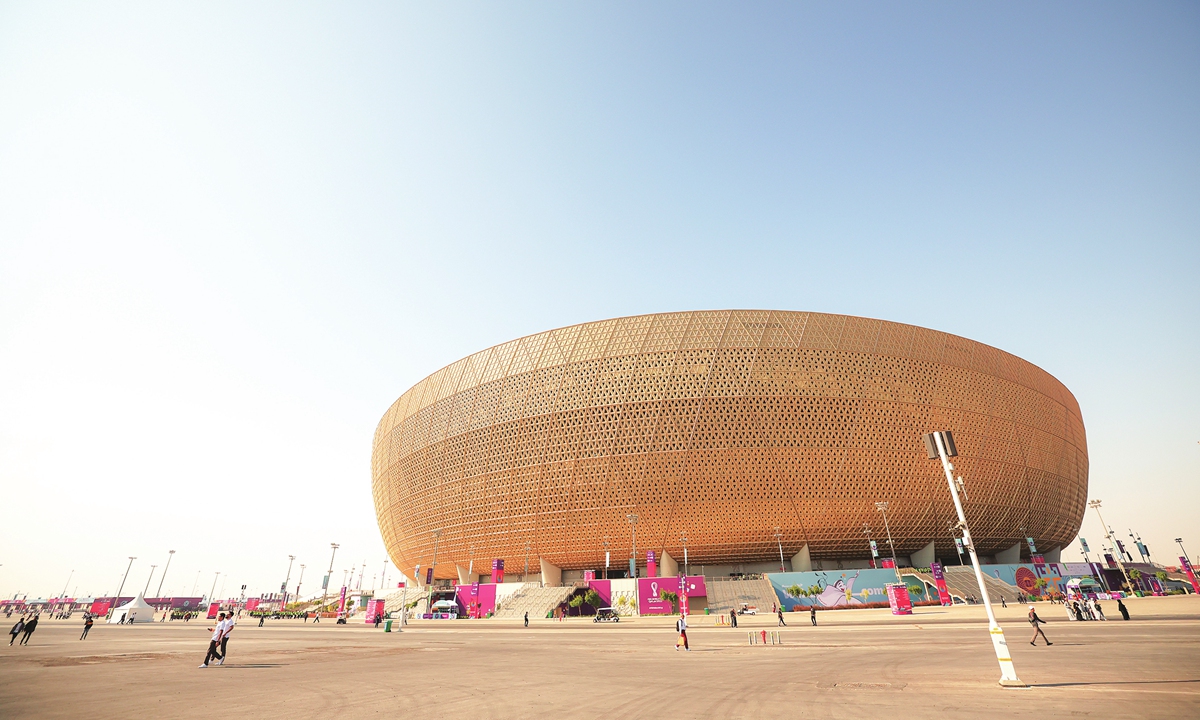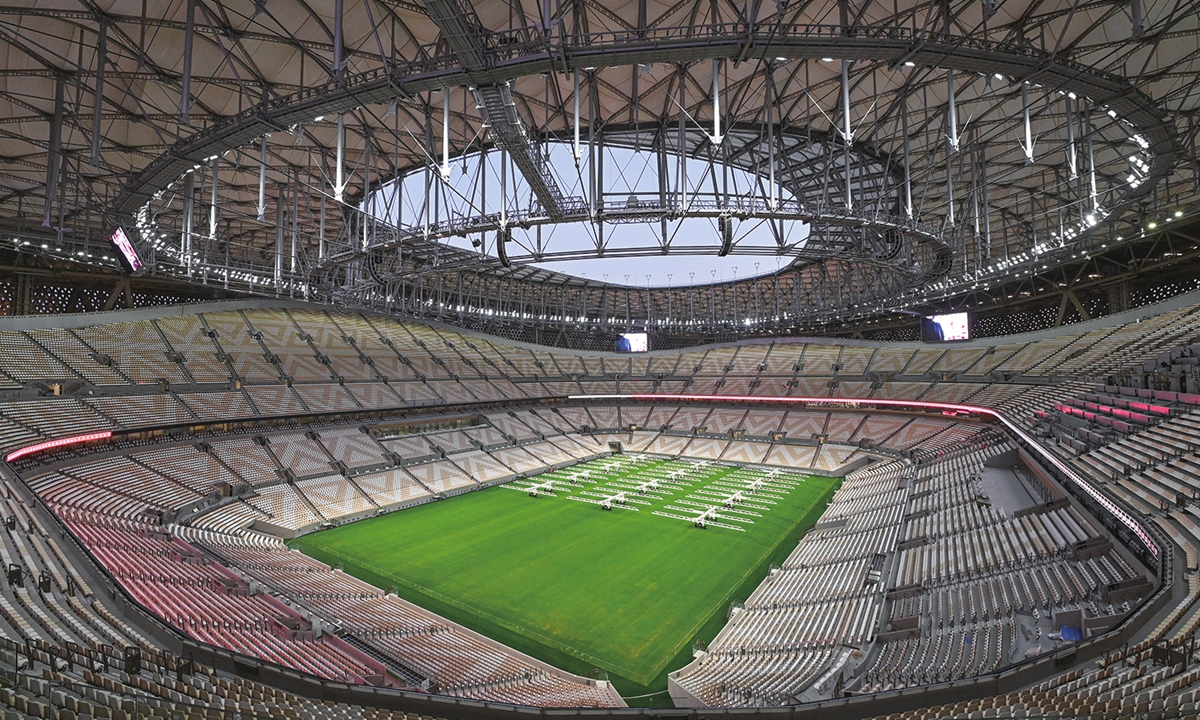
A general view outside the Lusail Stadium in Lusail, Qatar Photo: VCG
Even if you are not a football fan, you are sure to be impressed by the Lusail Stadium, the main stadium for the ongoing Qatar World Cup 2022.
The stadium, which has appeared in various international media headlines and social media posts, captures people's attention with its bold design and creative craftsmanship, which was inspired by the hand-crafted bowls found all across the Arab and Islamic world as well as the fanar lanterns found in the region.
The iconic stadium, which hosted the heavyweight maiden match between Argentina and Saudi Arabia on Tuesday and is set to host the most important final match, was constructed by the China Railway Construction Corporation (CRCC) together with Qatari company HBK Contracting in a joint venture.
"So excited to see the first China-built World Cup main stadium host the maiden match on Tuesday," Li Bai, the Chinese engineer from CRCC who was in charge of the project, told the Global Times.
"What's more, it has one of the world's most complex cable-membrane roof structures, while also being the most international World Cup stadium with the largest and most complex systems, the highest design standards and the most advanced technology."
'National team' The stadium has an oval shape and an elaborate sloping roof based on the vessels and tools traditionally used in the Middle East. Moreover, the muted gold exterior boasts an advanced lighting system.
Under the overall planning and leadership of the CRCC, 7,000 workers from more than 20 countries around the world jointly completed the construction of the 80,000-seat stadium in 2,118 days, according to Li.
Making full use of China's advantages in the infrastructure industry, Chinese companies have provided a full set of production chain solutions for the design and construction of the stadium. Members of the Chinese infrastructure industry's "national team," such as the Beijing Institute of Architectural Design (BIAD) and the Beijing Construction Engineering Group, were also deeply involved in the project, thereby bringing China's infrastructure supply chain and service chain to the world.
Green innovation The "crux" of the Lusail Stadium's design is its steel structure and roof. BIAD played a major role in designing this "heavyweight" section, which has the same amount of steel as three Eiffel Towers.
Made of state-of-the-art Polytetrafluoroethylene material, the stadium's roof, the world's largest tensile cable-net roof, protects the stadium from hot winds, keeps out dust and allows in enough light for the grass on the pitch to grow, while providing shade to reduce the burden on the stadium's cooling systems.

A general view inside the Lusail Stadium in Lusail, Qatar Photo: VCG
BIAD chief structural engineer Zhu Zhongyi, who oversaw the stadium's structure design, told the Global Times that the main structure mainly consists of curved V-shape trusses. This design solution reduced the amount of steel needed by 12,000 tons.
Designed using the team's innovatively developed BIM - an architecture information modeling database - the Lusail Stadium uses 40 percent less water than conventional sites thanks to measures such as systems that use collected rainwater and an improved water-saving sprinkler irrigation system, according to the construction team from CRCC.
In order to prevent natural disasters and terrorist attacks, the Chinese design team constantly ran simulations of the stadium's collapse during the design process, and conducted on-site research on the failure of key components under extreme conditions, Zhu said.
Olympic legacyNo matter if it is the stadium's innovative structures or thoughtful designs, they all reflect China's rich experience in designing creative, sustainable and reliable landmark buildings, such as the "Bird's Nest," the National Stadium for the Beijing 2008 Olympic Games, and the "Ice Ribbon," the National Speed Skating Oval for the Beijing 2022 Winter Olympic Games.
"Compared with the 2008 Olympic Games, the Lusail Stadium is the equivalent to China's Bird's Nest," Li told media.
Similar to the World Cup stadium, the Bird's Nest also boasts a complex steel structure and a representative curved surface. Such a simplistic yet elegant design exemplifies modern Chinese architectural aesthetics and helps China establish a "reliable yet full of ingenuity" image on the international architecture stage, Pang Xiangwei, an architect in Shanghai, told the Global Times.
Besides the Lusail Stadium, BIAD's "structural wisdom" has also been used in other Olympic projects, the most notable being the National Speed Skating Oval, which stadium has 22 ribbon-like curved glass curtain walls and incorporates a roof cable network independently designed by China.
"The Ice Ribbon's design is much softer and delicate than the Bird's Nest. It also shows the harmony that is praised by Chinese culture," Pang noted.





